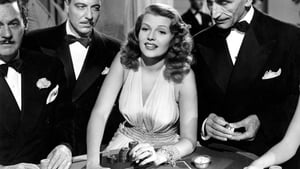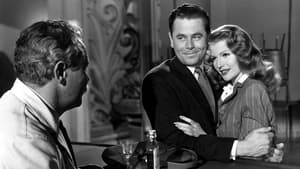Contact: [email protected]
Video Sources 0 Views

Synopsis
[ez-toc]





Introduction
In the ever-evolving landscape of cinema, the preservation and revitalization of old movies have become a crucial endeavor. One intriguing facet of this process is the art of colorization, a technique that breathes new life into classic films. In this exploration, we delve into the mesmerizing transformation of the 1946 American film noir, “Gilda Colorized,” as it undergoes the colorization process. This article aims to unravel the significance of colorization in preserving cinematic works, with a specific focus on how it impacts the visual experience of this timeless classic.
Read Media File Transfer Agreement: Terms and Conditions
Read FAQ
The Fascinating Journey of “Gilda Colorized”
“Gilda Colorized,” directed by Charles Vidor, stands as a quintessential example of film noir, a genre characterized by its dark themes and stylized cinematography. Set against the sultry backdrop of Buenos Aires in the 1940s, the film weaves a tale of love, betrayal, and power dynamics.
Rita Hayworth graces the screen as the enigmatic Gilda Colorized, delivering an iconic performance that has stood the test of time. Glenn Ford, portraying the complex character of Johnny Farrell, adds depth to the narrative with his nuanced acting. The story revolves around the intricate relationships between these characters, set within the volatile world of a Buenos Aires casino managed by a mysterious figure.
The black and white cinematography of “Gilda Colorized” adds a layer of mystique, enhancing the noir aesthetic. However, the decision to colorize such an iconic film raises questions about preserving the original artistic intent. How does colorization impact our perception of the characters and the narrative? Does it compromise the essence of film noir? These are crucial considerations as we embark on this visual journey through the lens of color.
Understanding Colorization in Film Restoration
Before delving into the impact of colorization on “Gilda Colorized,” it’s essential to comprehend the intricacies of the colorization process. Film restoration, as a broader concept, aims to breathe new life into old movies, ensuring their preservation for future generations. The controversial practice of colorization plays a pivotal role in this restoration process.
Organizations like TCM Presents … There’s No Place Like Hollywood have dedicated themselves to the meticulous restoration of classic films. Colorization involves the application of color to black and white footage, a technique that has garnered both support and criticism. While some argue that it enhances the viewing experience and makes old movies more accessible to modern audiences, purists maintain that it compromises the authenticity of the original work.
The ongoing debate surrounding colorization mirrors the larger conversation about balancing preservation with adaptation. Can colorization coexist with the purist’s preference for black and white? The answers lie in the specifics of each film and the careful application of color to enhance rather than overshadow the original vision.
The Significance of Colorizing “Gilda Colorized”
The decision to colorize “Gilda Colorized” carries particular weight due to its status as a classic film noir. The visual experience of watching this genre is deeply intertwined with its noir style – the stark contrasts, moody lighting, and shadowy atmospheres. How does colorization impact these elements while staying true to the director’s original vision?
Colorizing “Gilda Colorized” allows audiences to experience the film in a new light, quite literally. The lush reds of Gilda’s iconic dress, the neon glow of the casino, and the subtleties of facial expressions take center stage. The noir aesthetic is not sacrificed but rather enhanced, creating a visual tapestry that captivates the audience.
However, the decision to colorize a film like “Gilda Colorized” was not without controversy. Purists argue that the film’s noir essence is rooted in its black and white cinematography. They contend that the shadows and contrasts lose their impact when bathed in color. On the flip side, proponents of color enhancement argue that it opens the doors for a new generation to appreciate and connect with classic cinema.
To truly appreciate the impact, it’s essential to examine specific scenes. Take, for instance, the tense interactions between Gilda and Johnny Farrell. The colorization process adds emotional nuances, bringing out the depth of their expressions and intensifying the palpable chemistry between Hayworth and Ford. It’s a delicate balance – maintaining the noir aesthetic while elevating the visual experience.
The Enduring Legacy of “Gilda Colorized”
Beyond the technical aspects of colorization, the enduring legacy of “Gilda Colorized” is anchored in its status as a cult classic. The film’s inclusion in the National Film Registry serves as a testament to its cultural significance and enduring influence on future filmmakers. What makes “Gilda Colorized” a timeless treasure?
The film’s unique blend of genres, memorable characters, and quotable dialogue contribute to its cult status. Rita Hayworth’s career-defining performance as Gilda adds another layer of poignancy to the need for film preservation efforts. As we revisit this classic, knowing that Hayworth battled Alzheimer’s disease adds a layer of bittersweet nostalgia.
The film becomes not just a window into a bygone era but a testament to the fragility of memory and the importance of preserving cinematic gems. Colorization, in this context, takes on a new significance – not just as a technique to enhance visual appeal but as a means to ensure that the emotional resonance of films like “Gilda” transcends the passage of time.
Conclusion
In the realm of film preservation, the delicate dance between tradition and adaptation continues. “Gilda Colorized 1946” stands as a compelling case study, inviting audiences to explore the intersection of old movies and colorization. It prompts us to consider the importance of striking a balance between preserving the original integrity of classic films and making them accessible to contemporary audiences through techniques like colorization.
As we navigate the rich hues of Gilda’s world, we are reminded that the essence of film noir can coexist with the vibrancy of color. Johnny Farrell and Ballin Mundson may have existed in shades of black and white, but their complexities transcend the monochromatic palette. Ultimately, whether one chooses to experience “Gilda” in its original form or its colorized counterpart, the film’s timeless allure and the debate surrounding its transformation offer a captivating journey through the annals of cinematic history.













